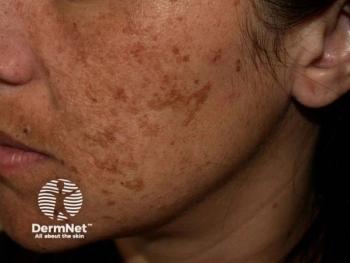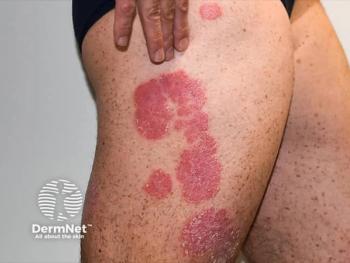
The Hidden Complexity of Reporting AEs
Key Takeaways
- Safety data in clinical trials is often overshadowed by efficacy but is crucial for real-world treatment decisions.
- Safety analyses evolve through trial phases, with phase 4 focusing on long-term safety in diverse populations.
Trials often exclude high-risk patients, limiting the real-world relevance of their safety findings.
In the world of clinical trials, especially those involving chronic conditions such as psoriasis, much of the spotlight tends to shine on efficacy—how well a drug works.1 But what about safety? Often, safety data is relegated to dense tables or appendices, given less analytical attention than efficacy outcomes. Yet for health care providers making real-world treatment decisions, understanding a drug's safety profile is just as critical as knowing how well it clears plaques. Recent research focused on interpreting safety data in psoriasis trials and explored why reading between the lines of adverse event (AE) reports is a must.2
The Foundation of Safety Analyses
Safety analyses are built into every phase of drug development. In the early phases (phase 1 and 2), the focus is largely on identifying safe dosage ranges, understanding pharmacokinetics, and observing immediate AEs—such as liver enzyme elevations or drops in hemoglobin. As trials progress into phase 3, the goal becomes confirming these findings in larger groups and detecting less common or delayed adverse events. Phase 4 studies go 1 step further by assessing long-term safety in a more diverse, real-world population—people with other health issues, different medications, and more variable lifestyles.
Understanding Adverse Events: Not All Are Created Equal
AEs cover a wide range of conditions, from mild symptoms like headaches to serious issues like hospitalization or death. Importantly, “serious” and “severe” are not interchangeable. A severe migraine might not be serious (if it doesn't lead to hospitalization), while mild chest pain might be considered serious if it results in emergency care. These distinctions are often misunderstood but matter deeply when evaluating drug safety.
The relationship between a treatment and an AE is typically judged by the study investigator. Some events are clearly linked such as a known immunosuppressant causing anemia that resolves once the drug is stopped. Others are murkier, like a sinus infection in a patient who already has a history of sinusitis. To add objectivity, particularly for serious or unexpected AEs, sponsors may use independent adjudication panels to determine whether an event is truly related to the drug.
Why Safety Data Can Be So Hard to Interpret
There are several reasons why safety data in trials can be difficult to interpret and even misleading. Many trials exclude patients with high-risk health profiles to streamline outcomes. While this improves internal validity, it also limits how applicable the findings are to real-world patients—those who may have depression, cardiovascular risks, or be on multiple medications. This means that adverse events common in the general population might not show up in trials simply because the study population is too “clean.”
Another challenge is inconsistency in how safety data is captured, coded, and reported. Trials use systems like the Medical Dictionary for Regulatory Activities (MedDRA), but depending on whether similar events are grouped together or split into subtypes, the final numbers can look very different. The review stated some events might not be reported at all if they fall below a publication threshold. Moreover, many reports lack critical context—such as how long an AE lasted or how severe it was—making it hard to draw meaningful conclusions.
Safety events are also often analyzed in the “safety population,” meaning anyone who received at least one dose of the drug. While this seems fair, it can actually dilute the data, especially if some participants dropped out early before meaningful exposure occurred. Without clear descriptions of which patients are included in the analysis, interpreting AE frequencies becomes guesswork.
Context Matters: Don’t Just Look at the Numbers
One of the most helpful tools for comparing safety data, according to the review, is the exposure-adjusted incidence rate (EAIR), which accounts for differences in how long patients are on treatment. Simply put, EAIR calculates how many events occurred per 100 person-years of exposure. This levels the playing field between patients who stayed on the drug for 2 years and those who only took it for a few months. Still, EAIRs must be interpreted carefully. Sometimes they’re reported per 1,000 or 10,000 person-years, and failing to note this detail can lead to big misunderstandings.
But numbers alone don’t tell the full story. Incidence rates of events like depression, cardiovascular disease, or cancer should be compared not only to placebo or other drugs, but also to background rates in the general psoriasis population. Registries like PSOLAR provide real-world data that can serve as an important benchmark.
Adding to the complexity are boxed warnings from regulatory bodies like the FDA. These warnings, the most serious type, often reflect known risks for a drug class, not necessarily a specific agent. As a result, newer or safer drugs may carry the same warnings as older ones due to class association. Clinicians should read the actual language in the prescribing information carefully to determine whether a risk is based on direct evidence from trials or on precautionary inclusion.
Making Safety Data Useful in the Clinic
To get the most out of safety data, researchers stated clinicians should look beyond headline statistics. Ideally, trials should report EAIRs for each significant AE and include meaningful comparisons with the general psoriasis population. Independent adjudication of serious events adds further value, especially when deciding between treatments with similar efficacy.
Pooling data from multiple trials or conducting meta-analyses can also help uncover rare but serious events that may not appear in individual studies. Clinicians should also pay attention to subgroup analyses by age, sex, or comorbid conditions, which can highlight safety risks for specific patient populations.
Finally, researchers suggested AEs should be presented in a format that makes interpretation easier—not just lengthy tables but also visual graphs, clear summaries, and context about severity and timing. When reviewing safety data, the absence of evidence should not be confused with evidence of absence.
Conclusion
Safety data in clinical trials often doesn’t get the attention it deserves, but researchers behind the review think it should. Clinical trials are limited by size, duration, and selective populations, which means they don’t always reflect the full picture of how a drug behaves in everyday practice. For providers treating patients with chronic diseases like psoriasis, learning how to read and interpret safety data with a critical eye is an essential skill. Understanding exposure time, context, and the nuances behind AE reporting enables more informed—and safer—treatment decisions.
References
- Umscheid CA, Margolis DJ, Grossman CE. Key concepts of clinical trials: a narrative review. Postgrad Med. 2011;123(5):194-204. doi:10.3810/pgm.2011.09.2475
- Zirwas M, Trickett C, Gorelick J, et al. Interpreting safety analyses in psoriasis clinical trials. J Clin Aesthet Dermatol. 2025;18(3-4 Suppl 1):S16-S23.
Newsletter
Like what you’re reading? Subscribe to Dermatology Times for weekly updates on therapies, innovations, and real-world practice tips.


















